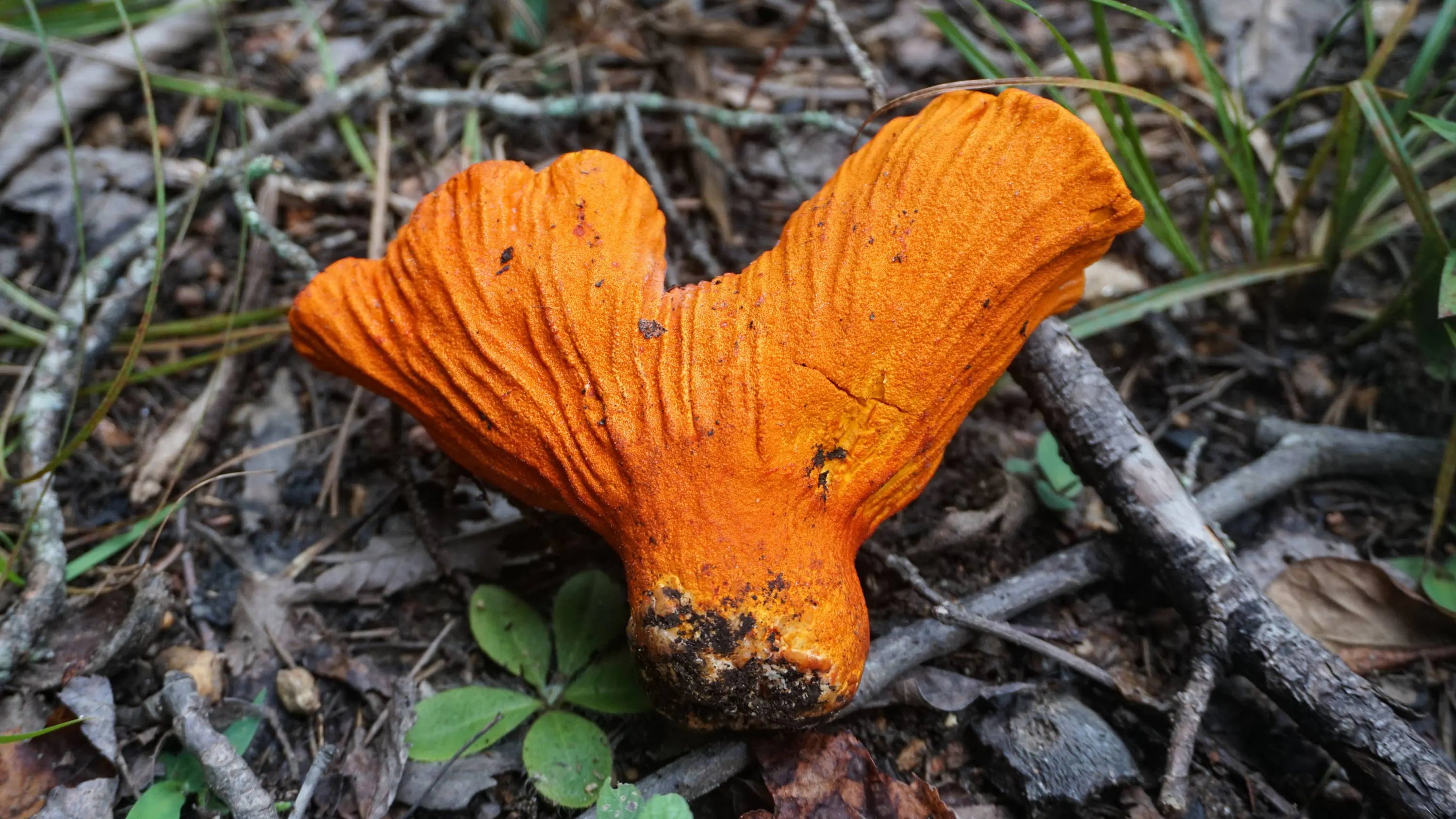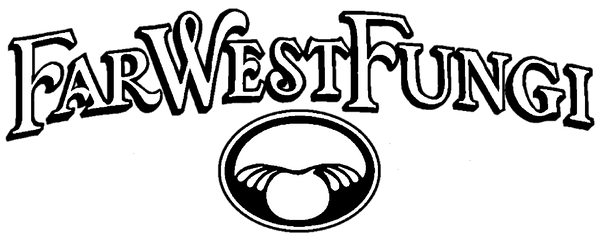The Lobster Mushroom

It’s not hard to figure out how Lobster mushrooms get their name. Their typically bright red color resembles lobster shells, and their distinctive scent conjures the buttery aromas of a Maine coast seafood boil. In a blindfolded test, one could be fooled into thinking they were actually smelling seafood. It may come as a surprise to find out that Lobster ‘Mushrooms’ are not actually mushrooms at all - but a mushroom parasitized by another fungus. Hypomyces lactifluorum is a ascomycete fungus that infects various species of wild Russula and Lactarius mushrooms. Interestingly, the specific host species are inedible in their natural state -- either too bitter or insipid to enjoy -- but once conquered by the parasitic Hypomyces fungus, they are transformed into this delicacy, known as the Lobster Mushroom.
Lobster mushrooms grow both on the East and West coast, and are one of the few wild mushrooms that appear in the late summer, typically growing from July, all the way into the wet winter months. The host mushrooms are relatively common, so Lobsters are likely to appear wherever Lactarius or Russula mushrooms grow. Their bright color makes them easy to spot. Look for tented spots in the forest floor, where the mushrooms are pushing their way up through the loam and pine needles. When selecting Lobsters, choose ones that are dense and heavy. Older specimens will have a styrofoam consistency, and are likely to be crumbly and full of worms. Their seafood aroma should be pleasant and appealing. Just like with real shellfish, a rank fishy smell is a sign that the mushrooms are past their prime. Avoid mushrooms with sticky, dark purple areas, as this is also a sign of decay.
Occasionally an anomalous pure white Lobster will occur. Experts debate the cause of this, theorizing that it could possibly just be an early stage of their development. In a box full of bright red and orange mushrooms, people often seem to reject the white ones in favor of their colorful brethren. They are missing out. The white Lobsters have all the flavor of the red ones, with a more tender texture. Most Lobsters are relatively crunchy, unless thoroughly cooked. For this reason, they are best when sliced thinly, and tenderized in something saucy. They do very well in risotto, and have a saffron-like effect, turning the rice an elegant golden color. They are also good in stews and braises. Like all mushrooms, their flavors bond to fats, so they can be used to make a strikingly orange compound butter. Lobsters are one of the best mushrooms for drying and powdering, which concentrates their flavor, and brings out sweet and nutty notes.
Cleaning Lobsters can be a challenge, since their caps are rough and craggy, and often deeply funnel shaped. The best method is to carefully carve out the dirty spots with a paring knife. Since their red color is easily wiped off with a damp towel, it is better to brush them gently (a soft bristled toothbrush makes a great mushroom cleaning tool).
Interestingly, these red tones can be used for dying textiles. Even with no mordant, boiling natural fibers (silk or cotton for example) with Lobster mushrooms will turn them a pinkish orange hue. Adding allum, tin, or copper will produce richer colors on the orange to red spectrum. So even if you’re not a seafood fan, you may still find a use for this unique two-fungus hybrid!
